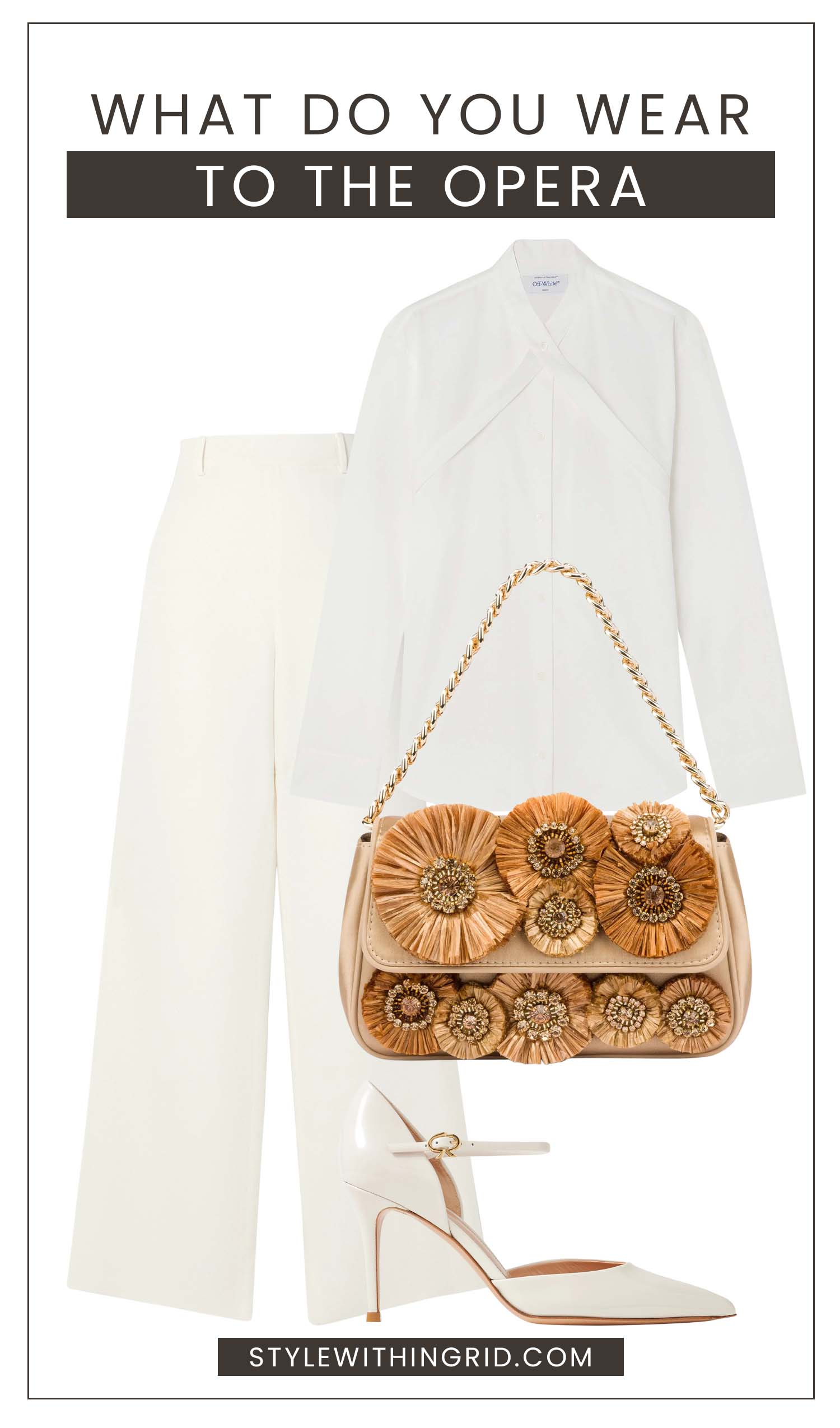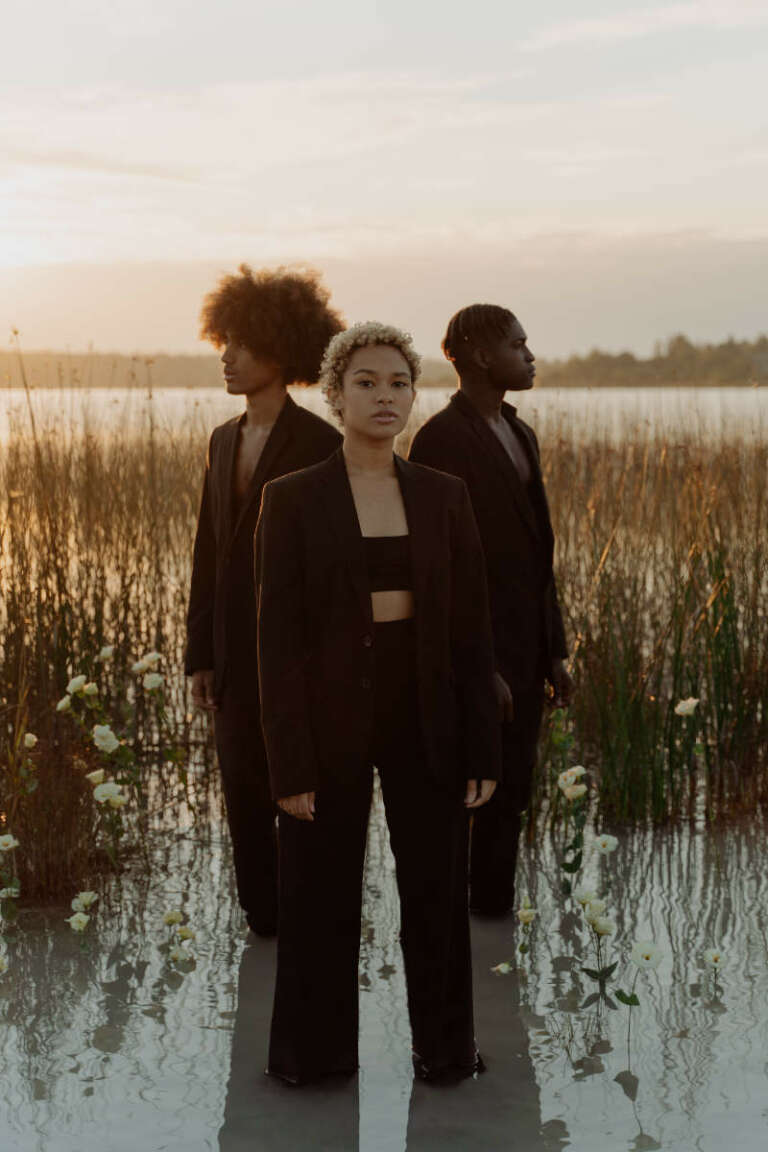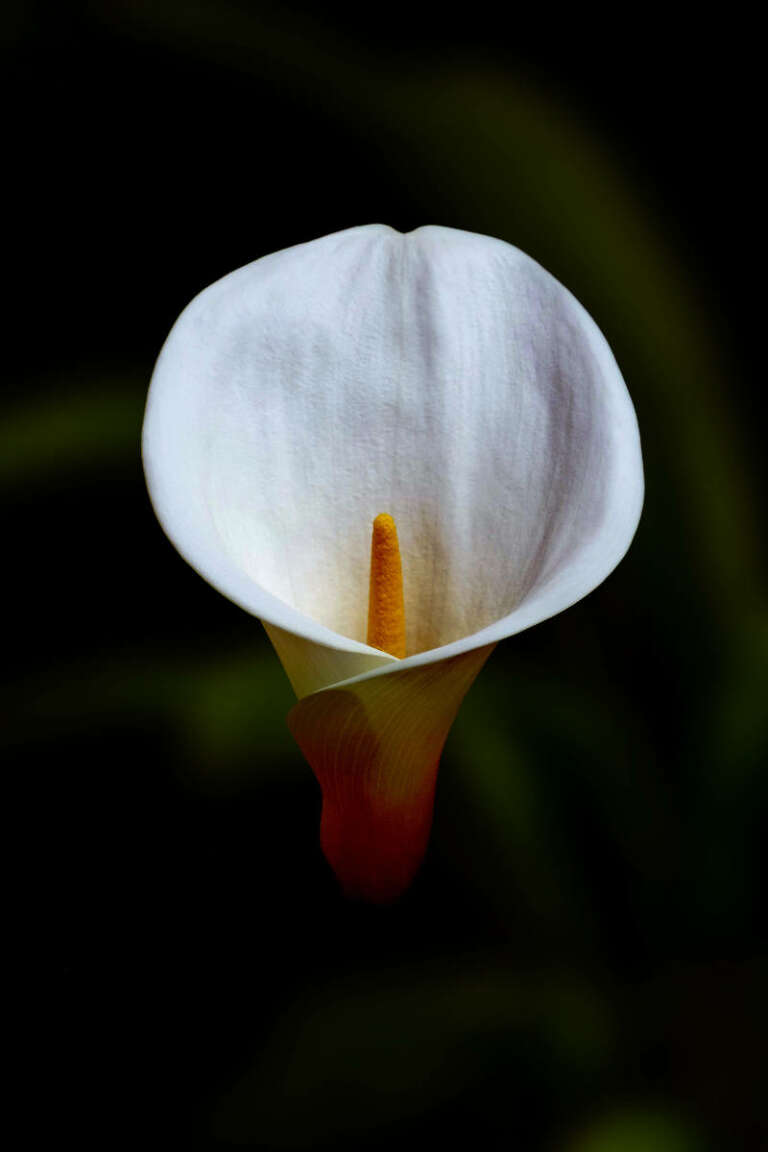A Complete Guide: What Do You Wear to the Opera
Attending the opera is a magical experience, where the beauty of music, drama, and fashion combine to create an unforgettable night. Dressing for the opera is not only about looking your best but also showing respect for the performers, the venue, and the art form itself. In this ultimate guide, we’ll explore essential outfit ideas, wardrobe pieces, and etiquette tips, all to address that pressing question: what do you wear to the opera?
Key Takeaways
- Understand the dress code for your specific opera house and performance.
- Balance elegance with personal style to create a harmonious look, choosing from formal attire such as gowns, semi-formal cocktail dresses or tailored trousers/jumpsuits.
- Accessorize appropriately with statement jewelry, comfortable shoes and bags. Adhere to cultural/regional variations in dress codes while avoiding overly casual items.
Understanding Opera Dress Codes
The opera is an event where tradition meets contemporary style, and understanding the opera dress code is crucial in selecting the perfect outfit. Dress codes can range from formal to semi-formal, depending on the event and venue. Regardless of the dress code, it is essential to strike a balance between elegance and personal style to create a harmonious and polished look. As you prepare for an evening at the opera, remember that the key to a successful outfit is confidence and comfort.
Opera attire varies based on the event and venue, so it is crucial to research the specific opera house and performance you plan to attend. For some events, a formal dress code may be expected, while others may call for a more relaxed, semi-formal approach. When in doubt, it is better to be slightly overdressed than underdressed, as it demonstrates respect for the performing arts and the occasion.
Formal vs. Semi-Formal
Formal opera outfit typically includes elegant gowns, while semi-formal attire encompasses cocktail dresses, jumpsuits, and blazers with dress pants. Regardless of the type of attire, the key is to choose pieces that reflect the sophistication and grandeur of the opera, such as formal dresses. On opening nights and special events, it is particularly important to dress formally to honor the occasion and the performers.
A full-length evening gown or a classic black dress often epitomizes formal opera attire for women. However, the specific event and venue should be factored into your ensemble selection. In some cases, a cocktail dress might be more appropriate, allowing you to achieve a polished and elegant look without feeling out of place.
Seasonal variations
Seasonal variations in opera dress codes may require you to consider different fabrics, colors, and styles depending on the time of year. During the summer months, opt for lightweight and breathable fabrics, such as cotton or linen, to ensure comfort throughout the performance. Conversely, in the winter season satin or knit fabrics can help you stay warm and stylish.
When selecting an opera dress for any season, consider hues that exude a formal aesthetic, such as:
- navy blue
- red
- black
- lilac
These timeless colors can be effortlessly incorporated into your opera ensemble, regardless of the season. Remember, the key is to dress elegantly and appropriately for the occasion, taking into consideration the specific event, venue, and time of year.
Choosing Your Opera Outfit
Armed with a clearer understanding of opera dress codes and seasonal variations, you can now select the ideal outfit for your night at the opera.
Elegant Evening Gowns
An elegant evening gown is a quintessential choice for a night at the opera. When selecting a gown, consider the following:
- Length: Opt for a floor-length gown for a more formal look.
- Style: Ball gowns with ruffles, mermaid silhouettes, and backless designs exude sophistication.
- Body shape: Choose a gown that flatters your body shape.
- Event formality: Consider the formality of the opera event when selecting your gown.
Floor-length elegant gown styles, such as ball gowns with ruffles, mermaid silhouettes, and backless designs, exude sophistication and are perfect for more formal opera events.
For this outfit, we picked a beautiful dress from Reem Acra. To add different colors and textures, we went with a burgundy velvet clutch and shiny silver sandals.
We often get asked about matching accessories with clothes:
- First, think about the main piece of your outfit and its colors.
- Then, look at the details on it.
- In this case, white metal jewelry with red stones would be great.
- The dress has a unique one-shoulder design, so go for small earrings and a bracelet on the arm that shows, matching the style of the clutch’s buckle.

- Reem Acra: One-Shoulder Lamé Gown
- Manolo Blahnik: Capri Crystal-Embellished Satin-Trimmed Red Velvet Clutch
- René Caovilla Cleopatra Metallic Leather Sandals
Cocktail Dresses
Cocktail dresses offer a versatile and stylish alternative to evening gowns for the opera. When selecting a cocktail dress, consider the length and color that best complements your style and the event’s formality. Darker hues such as navy blue, charcoal gray, or dark plum are often preferred for a more formal appearance.
A cocktail dress may be the ideal choice for occasions when a full-length gown might be too formal. Pairing your cocktail dress with statement accessories, such as jewelry and elegant shoes, can elevate your outfit.
In the following example, we have illustrated how to match a silver dress with gold accessories:
- Considering the clean neckline of this dress, a necklace would be a good addition.
- You might also consider subtle earrings or a delicate ring to finish the look, although they’re optional.

- Partow: Gia Wrap-Effect Midi Dress
- Martha Calvo: Madison Gold-Plated Necklace
- Manolo Blahnik: Capri Long Crystal-Embellished Metallic Leather Clutch
- Gianvito Rossi: Gianvito 105 mm Gold Pumps
This example highlights Zimmermann’s unique design and focuses on balancing accessories and shoes to complement, not overshadow the dress. We selected simple satin shoes and suggest pairing them with a matching fabric clutch, understated earrings and a ring to complete the outfit.

- Zimmermann: Liftoff Floral-Print Midi Dress
- Valentino Garavani: Nite-Out 110 Bow-Detailed Satin Pumps
In our next example, we demonstrate crafting a contemporary monochrome style using a brown satin dress paired with gold accessories.

- Solace London: Orla Satin-Twill Midi Dress
- Manolo Blahnik: Capri Long Crystal-Embellished Metallic Leather Clutch
- Gianvito Rossi: Gianvito 105 mm Gold Pumps
The next two outfits show how to pair floral-print dresses with white accessories – one featuring pearls and the other with classic smooth leather.

- Emilia Wickstead: Mara Midi Dress
- Mateo: 14-Karat Gold Pearl Necklace
- Jimmy Choo: Micro Cloud Clutch

- Markarian: Ginger Floral-Jacquard Midi Dress
- Gianvito Rossi: Vernice 85 Pumps
- Ferragamo: Iconic Top Handle Bag
Trousers and Jumpsuits
For a contemporary twist on traditional opera attire, consider opting for trousers or jumpsuits. These versatile pieces can be dressed up or down depending on the event’s formality and offer a unique alternative to more conventional gown and cocktail dress options. Trousers and jumpsuits can be paired with elegant blouses and statement accessories to create a polished and modern look.
When selecting trousers or jumpsuits for the opera, consider the following:
- Choose tailored and well-fitting designs that complement your body shape and personal style.
- Opt for luxurious fabrics and sophisticated cuts to ensure that your outfit is both comfortable and appropriate for the occasion.
We’ve created a monochrome white ensemble that is transformed by a single key element: a bright handbag adorned with flowers. This addition makes the outfit perfect for an evening at the opera.

- Valentino Garavani: Silk-Crepe Wide-Leg Pants
- Off-White: Cotton-Poplin Shirt
- Alberta Ferretti: Flower-Embellished Satin Handbag
- Gianvito Rossi: Vernice 85 Pumps
Essential Opera Wardrobe Pieces
Building an essential opera wardrobe allows you to have a selection of versatile pieces that can be mixed and matched for various events. Having a well-curated opera wardrobe not only saves you time and energy when preparing for an event but also guarantees that you will always be appropriately dressed for any occasion.
You can invest in classic and elegant gowns and accessories that never fall out of fashion. These classic pieces can be adjusted effortlessly to suit various levels of formality and updated with modern and trendy accessories.
Alternatively, you can consider rental services, which allow you to experiment with different designs and colors for different occasions without a substantial commitment.
Timeless Elegance
Opt for timeless fabrics like silk, satin, or velvet that emanate elegance. Classic cuts such as A-line dresses or fitted trousers, and colors like black and white, navy blue, or deep red provide versatility.
For more formal opera nights, elegant gowns adorned with tasteful embellishments or lace details can be your staple. On the other hand, a well-tailored suit, paired with a crisp white shirt or a chic blouse, offers a sleek and sophisticated look that’s perfect for both men and women attending the opera.

- Valentino Garavani: Silk-Crepe Wide-Leg Pants
- Paco Rabanne: Crystal-Embellished Sweater
- Saint Laurent: Le 5 à 7 Cream Shoulder Bag
Contemporary Chic
Add a modern twist to your opera wardrobe by incorporating trendy items such as blazers with accentuated shoulders, peplum designs, and items boasting an edgy aesthetic. Opt for modern and versatile pieces that can be easily mixed and matched with classic and timeless elements.

- Valentino Garavani: Silk-Crepe Wide-Leg Pants
- Meng: Georgette Silk Shirt
- Ferragamo: Iconic Top Handle Bag
Accessorizing Your Opera Look
When accessorizing your opera ensemble, consider the following:
- The formality of the event
- The overall aesthetic of your outfit
- Opt for statement pieces that complement your attire and reflect your style
Statement Jewelry
Statement jewelry can play a significant role in elevating a simple outfit and adding a touch of glamour to your opera look. Some unique and bold pieces to consider include:
- Statement necklace
- Bracelets
- Earrings
- Rings
Look to renowned jewelry designers like David Morris, David Yurman, and Garrard for inspiration.
Shoes and Bags
When selecting shoes for the opera, consider dress shoes or loafers that are comfortable enough for sitting for extended periods. Sneakers and casual shoes should be avoided.
When it comes to choosing a bag, opt for a small clutch or wallet to carry necessary items such as tickets, a phone, and a small wallet. Large bags, backpacks, and luggage are typically not permitted in most opera houses.
Outerwear and Cover-Ups
Outerwear and cover-ups can provide warmth and additional style to your opera ensemble. When selecting outerwear, consider tailored overcoats, topcoats, and blazers that complement your attire and provide warmth if the opera house is chilly.
Cover-ups, such as shawls or wraps, can also add a stylish and sophisticated touch to your ensemble. Consider incorporating elegant lace or neutral designs for a timeless appeal.
This outfit stands out as a favorite in the collection. It features a cozy sweater dress paired with short fur coats and heeled ankle boots, ideal for chilly weather. For extra warmth, consider layering with thermal clothing and warm tights underneath.

- Giuliva Heritage: Susanna Mohair-Blend Maxi Dress
- Saint Laurent: Faux Fur Short Coat
- Gianvito Rossi: Vitello Glove 85 Embellished Ankle Boots
Dress Code Etiquette
When attending the opera, considering the dress code and the event’s formality level is critical. Knowing what to avoid, balancing being overdressed or underdressed, and understanding cultural and regional variations can help ensure that you are appropriately dressed for the occasion.
What to Avoid
When attending the opera, it is crucial to avoid wearing overly casual attire, such as:
- denim jeans
- t-shirts
- shorts
- sneakers
These items are not only inappropriate for the formal setting of the opera but can also be perceived as disrespectful to the performers and the occasion.
Avoid overly revealing clothing, as it can detract from the elegance of your ensemble and the overall atmosphere of the opera. Instead, focus on finding pieces that strike a balance between sophistication and your style. By adhering to the appropriate dress code etiquette and choosing proper attire, you can ensure that you are always dressed to impress, regardless of the occasion.
Overdressed vs. Underdressed
Balancing between being overdressed and underdressed can be a challenge when attending the opera. Although erring on the side of overdressing is generally preferable, considering the specific event and venue while choosing your attire is important. Opting for a more formal ensemble, even in business casual attire, can demonstrate respect for the occasion, while also ensuring that you feel comfortable and confident in your attire.
Cultural and Regional Variations
Dress codes can differ notably depending on the specific country and venue, with some regions leaning towards more formal attire, while others may be more relaxed. For example, while a European opera house might expect evening gowns and tuxedos, one in a more casual setting might be content with business casual attire. To ensure appropriateness, always research the dress standards and cultural expectations of the opera location you’ll be attending.
Summary
In conclusion, dressing for the opera is an art that combines elegance, personal style, and respect for the occasion. By understanding opera dress codes, choosing the perfect outfit, incorporating essential wardrobe pieces, and accessorizing your look, you can create a unique ensemble that reflects your individuality and the event’s formality.
Frequently Asked Questions
How do you dress for an opera?
While traditional opera attire often calls for formal wear like evening gowns or tuxedos, many contemporary venues have adapted their dress codes. Aim for a balance of smart-casual and formal attire, such as cocktail dresses, tailored blazers, or dress shirts in combination with tailored trousers. However, it’s advisable to avoid overly casual items like denim or sneakers to preserve the event’s elegance.
What do ladies wear to the opera?
Women often opt for dresses when attending the opera, ranging from elegant cocktail dresses to more sophisticated floor-length gowns. Avoid anything too short, tight, revealing, or casual. Alternatively, tailored jumpsuits or sophisticated blouses paired with skirts can also make a stylish statement.
Do people dress up to see the opera?
The tradition of dressing up for the opera has evolved. While some individuals may still prefer to dress formally, it’s also acceptable to choose attire that is more casual, yet still tasteful. Ultimately, the choice of how formal or informal to dress is a matter of individual preference.
Is it OK to wear jeans to the opera house?
Though black jeans can sometimes pass as formal attire, if you aim to align with the customary opera ensemble, it’s recommended to choose more polished options like a suit or a cocktail dress.
How can I ensure that I am appropriately dressed for an opera in a different country?
It’s essential to investigate the dress code and cultural norms of the country and the specific opera venue you’ll be visiting. Familiarize yourself with their customs and integrate those elements into your outfit, ensuring you both respect and reflect local traditions in your attire.
Featured image by Morteza Ghanbari.






